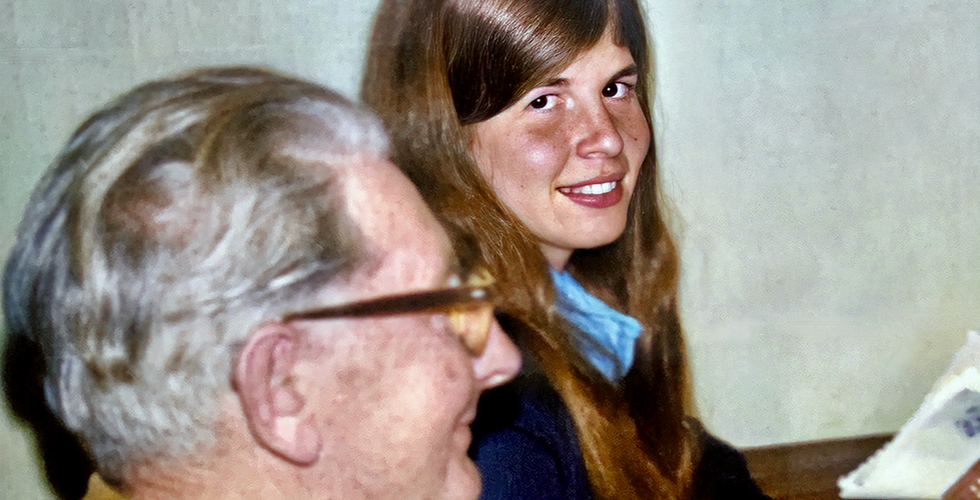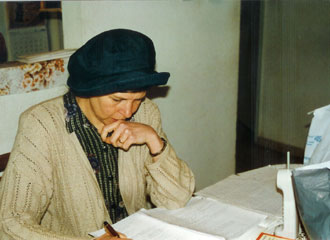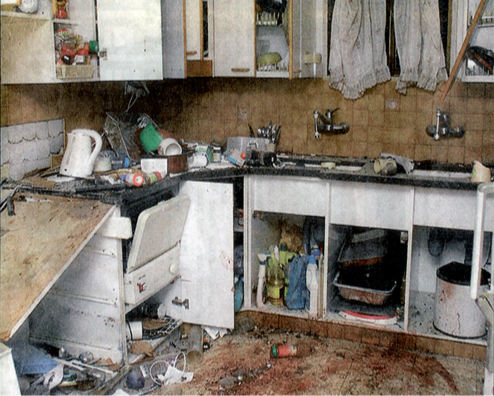The story of their lives and deaths
- .
- Apr 8, 2021
- 11 min read
Updated: May 17, 2022
Dina and Eli's special story weaves within it struggles of searching for meaning and identity, cultural, language and country changes. Building relationships and dealing with pregnancy complications and other problems.
From the moment they tied their lives together, they established their love for each other and their faith in Gd without giving up their previous lives with their family, and by constantly listening to their souls and hobbies.

Childhood period
Eli, Elnatan
Eli was born Elnatan in the village of Haroeh in Israel, on August 29, 1951. Eli is the eldest son of Rabbi Moshe and Leah Horowitz. "His father served as a rabbi at the Bnei Akiva Yeshiva and was sent by Rabbi Neria to establish the Meron Yeshiva.
When Eli was about six months old, his parents returned to the United States, first due to the need for medical treatment, and later remained there due to management positions his father received in Jewish institutions.
Eli spent most of his childhood in Miami Beach, Florida, and at the age of 10, his family moved to Silver Spring, Maryland, where his father served as the principal of the Jewish school.
Slideshow - can be flipped to the sides
In the slideshow you, you can browse through photos of Eli from his childhood until the age of 10 in Kfar Haroeh - Israel and in Florida.
Debbie, Dina
Dina was born as Debra Ruth and was named Debbie. The name Dina is a Hebrew name that she started using when she came to Israel. She was born in Washington, DC, on March 17, 1953.
Debbie is the youngest daughter of Manny (Menachem Mendel Emanuel) and Bernice (Chaya Bila) Wolf. In Washington, her father worked as a procurement officer at the Pentagon. Her mother worked in accounting.
Slideshow - can be flipped to the sides
A slide show of photos of Debbie from her birth and during her young childhood
Although Debbie grew up in a non-religious home, in Silver Spring - Maryland, her parents, who both worked, preferred to send her to a Jewish school where they also study on Sundays. This is how she came to the "Hebrew Acadmy" Jewish school, which was later run by Eli's father.
During her studies, Debbie became attached to the principal's daughter, Toby (Tova) Horowitz and they became good friends. Debbie found in their home a warmth and a religious Jewish atmosphere that she did not recognize in her home. Debbie enjoyed being with them on Saturdays and holidays.
Slideshow - can be flipped to the sides
A slide show of Debbie as a child and girl in Silver Spring near Washington, DC
A collection of videos from Debbie's childhood
Adolescence
Eli, Elnatan
In his younger years Eli chose to put the world of Torah and Judaism behind him. It was the sixties of the hippies in the United States and Eli blended well with the atmosphere.
When Eli was 16 years old, after incarnations of self-search throughout the United States, he paid a brief visit to Israel with Aunt Shoshana Carmeli - his mother's sister from Kibbutz Hulata, a kibbutz of Hashomer Hatzair, from where he planned to continue to India to learn the Buddhism.
Slideshow - can be flipped to the sides
A slideshow of pictures of Eli from the time he was looking for his identity. Eli seems a bit lost in America and when he arrives at Kibbutz Hulata
Eli fell in love with Israel and the Carmeli family that hosted him. He remained to live with them in Kibbutz Hulata in the Hula Valley.
As he told me years later, he never abandoned his plans to continue to India, but he did not exhaust what he was getting from the Torah of Israel.
During this time in her illness, Eli became very attached to his uncles, Shoshana and Nahum, who "injected" him with high-dose Zionism and connected him strongly to the people and the country. A connection that made Eli feel a sense of belonging and that helped him deal with the difficulties of absorption. Eli even linked his name to them and to this day they know him in a kibbutz called Eli Carmeli.
During his illness, Eli connected to Israeli roots and became involved in farming. Eli worked in field crops in the kibbutz fields and especially liked to "take out fertilizer" by growing vegetables and flowers in the flower bed he set up.
When he reached conscription age, Eli enlisted in the IDF, as a paratrooper.
Slideshow - can be flipped to the sides
A slide show of Eli from his time as a soldier, first in a kibbutz and later with his family who immigrated to Israel
During the period of his military service, Eli's family returned to Israel, following in his footsteps. The Horowitz family moved through four apartments until they finally settled in Beit Vagan in Jerusalem.
Eli's father founded the BMT Beit Midrash Torah Yeshiva in Jerusalem, a yeshiva for American boys that he headed and brought students from America to every year.
Debbie, Dina
Debbie came to Israel at the age of 18 for a year of study at a "college" in Jerusalem for a one-year program for American girls. Debbie's arrival in Israel was consensual, but to the displeasure of her parents who feared that Jewish studies would disrupt the continuation of her campus.
Slideshow - can be flipped to the sides
A slide show of photos from Debbie's trips during her school year in Israel. Debbie studied at a "college" in the "Beit Vagan" neighborhood of Jerusalem.
Rabbi Moshe Horowitz, Eli's father, tells the story of their life
During her studies in Israel, Debbie was a housewife at the Horowitz family home, whom she knew well from her studies in the United States, from the school run by Father Moshe and from the good friendships with his daughter Toby.

Toby and Debbie
In this house, in Jerusalem, Debbie met Eli who came to visit his parents. One visit, particularly significant, was on the Passover holiday when Eli, who was not feeling well and came from the army to visit his parents' house and only Debbie who was left to celebrate a second good day of postcards was there. Eli persuaded her to go on a hike with him to Mount Malcha, to finish the film on camera.
Slideshow - can be flipped to the sides
The first photos in the presentation are from the first couple trip. The extra photos - theirs until the wedding
The granddaughter, Naomi Horowitz describes the meeting between Eli and Debbie
The beginning of the relationship
The fire of love that ignited did not go out, even when the parents of the two tried to dissuade Debbie from this relationship. Debbie's parents were very disturbed by the distant school year from her country of residence and they destined her to develop in academia, perhaps as a mathematician, musician or doctor. As far as Debbie's parents are concerned, the relationship with Eli can only distance her from the normal development of a career and her family.
Eli's parents sat down with Debbie and tried to help her, at her request, decide whether to marry Eli, their son. Rabbi Moshe and Leah Horowitz felt very warm feelings for Debbie and saw her as their daughter. They saw the process she was doing in approaching Judaism and they feared that their son was not suitable for her.
The two fell in love precisely while each of them did the opposite in his religious identity. Debbie was fascinated and approached Judaism, while Eli, who had already left religion at the age of 15, tried to convince Debbie that everything was nonsense. The bond between the two was strong and loving from the first moment. Together they researched and formulated a special way of life, together they re-paved the love of life from the Torah and approached Judaism.
Several months after the bond grew stronger, Debbie returned to the United States for her family. This period was challenging and was accompanied by mental difficulties in dealing with her parents regarding the kosherness of the home and difficulties in communicating with Eli who was waiting in the country and fearing the negative impact of the Diaspora on Debbie.
During this period, Debbie identified herself with the Hebrew name Dina, although she did not like the name that reminded her of 'Law' and sounded stiff and less appropriate to her soul, but she remained with that name. Her family and acquaintances always kept calling her Debbie.
Eli began studying at the Merkaz Harav Yeshiva in Jerusalem, with the late Rabbi Zvi Yehuda Kook, the son of Rabbi Avraham Yitzchak HaCohen Kook, and devoted himself entirely to clarifying his way by adhering to his teachers, Rabbi Oded Wolansky and Rabbi Zvi Tao.
Slideshow - can be flipped to the sides
A slide show of photos from the wedding held at the Merkaz Harav yeshiva in Jerusalem, 10 Av 1973
Establish a loyal home in Israel (in many places in Israel)
After their wedding, which took place at the Merkaz Harav yeshiva on Tuesday, August 3, 1973, Eli and Dina lived in the Makor Baruch neighborhood near the Mahane Yehuda market in Jerusalem, and together they built their spiritual home in poverty and modesty. Eli joined the Keshet nucleus in Quneitra in the Golan Heights, but returned to Jerusalem with the birth of his eldest daughter, Batsheva.
After the birth of Batsheva, the young family moved to Moshav Ramat Magshimim in the Golan Heights, where Eli studied at the kollel established by the late Rabbi Goren. Every week I went to study with Rabbi Shlomo Aviner, who served as the rabbi of Kibbutz Lavi.
Eli continued his spiritual path at Rabbi Yossi Sarid's Meretz Yeshiva in Mevaseret Zion, where they moved to the absorption center in Mevaseret where their son Zvi was born. They then moved to nearby Tel-Stone.
In 1979, the family moved to the ultra-Orthodox neighborhood of Shikun Pagi in Ramot-Eshkol in Jerusalem, where their daughters Nehama and Shulamit were born.
Eli returned to study at the Merkaz Harav yeshiva and began teaching at the "Morasha" Talmud Torah. Religious Zionist Talmud Torah in the view of Rabbi Kook's Torah. Dina worked raising the children and taught piano at home. The family later moved to the Kiryat Moshe neighborhood near the Merkaz Harav yeshiva.
During this period, Dina's parents immigrated to Israel close to their daughter and they bought a house in Ma'ale Adumim, but two months later, on Lag B'Omer, Dina's father died of a heart attack.
The family moved to Kiryat Arba in 1984, where the family managed to move three apartments, with their final stop in Building 35 when they bought and connected two Amidar apartments. The two apartments were an abandoned and rotten warehouse of the Nir Yeshiva that Eli and Dina, the children, friends and cousins, cleaned and renovated. The apartments became a house that was full of love and holiness. Full of guests, male and female students. Home of a loving family. A house that became an altar.
Slideshow - can be flipped to the sides
The Horowitz family - Dina, Eli and their four children Batsheva, Zvi, Nehama and Shulamit
The enterprise of their lives
Rabbi Eli taught Torah in many places, including Yeshivat Shavei Hebron, which was his main place of work, Midreshet HaRove in Old Jerusalem, Midrashat Shirat Hebron, Midrashat Rashit, Yeshivat Ma'ale Hever, Yeshivat Mitzpe Ramon, Yeshivat Tel Aviv and Netzarim. Over the years, Rabbi Eli has also taught children at a licensed Talmud Torah in Jerusalem, teaches at Elon Moreh and taught classes in various locations throughout the country. Also, for about a year, Rabbi Eli flew to the United States every month for a weekend where he taught Torah lessons in various communities.
Rabbi Eli taught and lectured and made an effort, although he suffered from a severe vocal cord problem that severely limited his ability to speak and he often fell asleep and needed long speech fasts.
In my free time, Eli, who has a golden hand, often engaged in carpentry and garden care. He built with great professionalism all the bookcases in the house and other furniture and lovingly nurtured the garden he established.
Dina completed a bachelor's degree in education and a master's degree in music. In addition to being a piano teacher, she worked as an As a high school educator in Kiryat Arba and as a music teacher at the Ulpana, and later taught at the Quarter College in Old Jerusalem and other schools. She was known for being a beloved educator devoted to her students in every aspect of her life. Many saw her as a guide to life and an attentive ear.
Slideshow - can be flipped to the sides
Slideshow of Rabbi Eli with his students and in the garden of the house
Slideshow - can be flipped to the sides
A slide show of photos of Dina from the period in Kiryat Arba
The murder
As in their lives, which were together in everything, so in their deaths - Rabbi Eli and Dina the 14th were murdered in their home, in the midst of a Shabbat meal, on the eve of Shabbat Kodesh Parshat Pekudi, 4 Adar 2 5763 (7.3.2003),
At the end of a day of hiking in the sea of spring flowers after a snowy week, Eli and Dina came back to get ready for Shabbat. The three eldest children, Batsheva, Zvi and Nehama, were already married and were each at home. Zvi got married four months before that Saturday.
Shulamit, who still lives at home, went to sit in Eilat. Itamar Shaked, the neighbor who was a member of the household, came in before the Saturday night meal and announced that he was going to dine with friends. This created a very rare situation in which Eli and Dina dined alone on Saturday night.
In the middle of the meal, two terrorists, 16-year-old murderers, broke through and cut the electric fence of Kiryat Arba at a point near Eli and Dina's house. The security patrol that arrived following the alert received at the hotline did not identify the terrorists who were hiding. After the ranger left, the terrorists, who were disguised as yeshiva students, climbed up the street and encountered a couple who were neighborhood patrols on patrol to increase security during a period saturated with terrorist attacks and terrorist infiltrations. After the terrorists severely wounded the woman and chased her husband, they jumped over a low stone fence and wanted to develop the Horowitz family home.
There were four openings to the Horowitz family's house, like the tent of our ancestor Abraham, one on each side, but Eli and Dina did not manage to escape and they ran to the place where they felt most protected in the center of the house, in Batsheva's room. There they were found embracing lifeless.
After the murder, the terrorists took Eli's gun, a gun that before the murder Eli managed to shoot with him through the door of Batsheva's room, and went back towards the kitchen, where they exploded with the explosives they carried after Eli's students and Kiryat Arba stand by came and shot the killers.
Slideshow - can be flipped to the sides
Slideshow of their pictures together, you can see their immense love, the first picture was taken a few hours before their murder, on their walk on Lupine Hill in the Ella Valley
Slideshow - can be flipped to the sides
Summary
Dina and Eli, Rabbi Eli, were endowed with the attribute of the fathers of the nation: boundless love for every person. Hundreds of people crowded into their shadow, consulting with them on every issue. There was boundless devotion in them to every person with every problem. Their home was open to everyone at all times.
They lived their lives from the Torah, and knew how to open up from the Torah to the world of music, science and philosophy, but the main part of their art was the art of the soul, with a lot of humor ...!
The intense love between them radiated everywhere. Until their last day they behaved like a young couple on their honeymoon, and so on Friday, the eve of their death, as they hiked together on Lupine Hill in the Ella Valley and dipped in a sea of flowers.
Rabbi Eli and Dina were unique educators, with talent and mental and practical creativity; Educators with depth and horizon, who have built in the souls of all who meet them a long gaze connected to eternity, along with sensitivity and caring for the details of the present.
Their warm, happy, sincere attitude, which gives space to every person wherever he is, attracted to them all who met them, people of all shades and of all kinds.
Dina had a blood pressure problem, so the doctors recommended after her first pregnancy that she not get pregnant again. Dina went through many pregnancy attempts, and in addition to her four children who were born healthy, she also underwent seven abortions and two children who died near birth. These trials and struggles in other areas, have built not only characters with special and winning personalities, but also relationships that we look up to.
The daughter, Batsheva, tells the story of their lives

The story of their lives is described in detail in the prose book "And there is no more stalk" published by Yedioth Ahronoth, by Batsheva Sadan, the home of Rabbi Eli and Dina. And in a book / album in their memory.





















































































































































































































































































































































































































































































































































































Comments